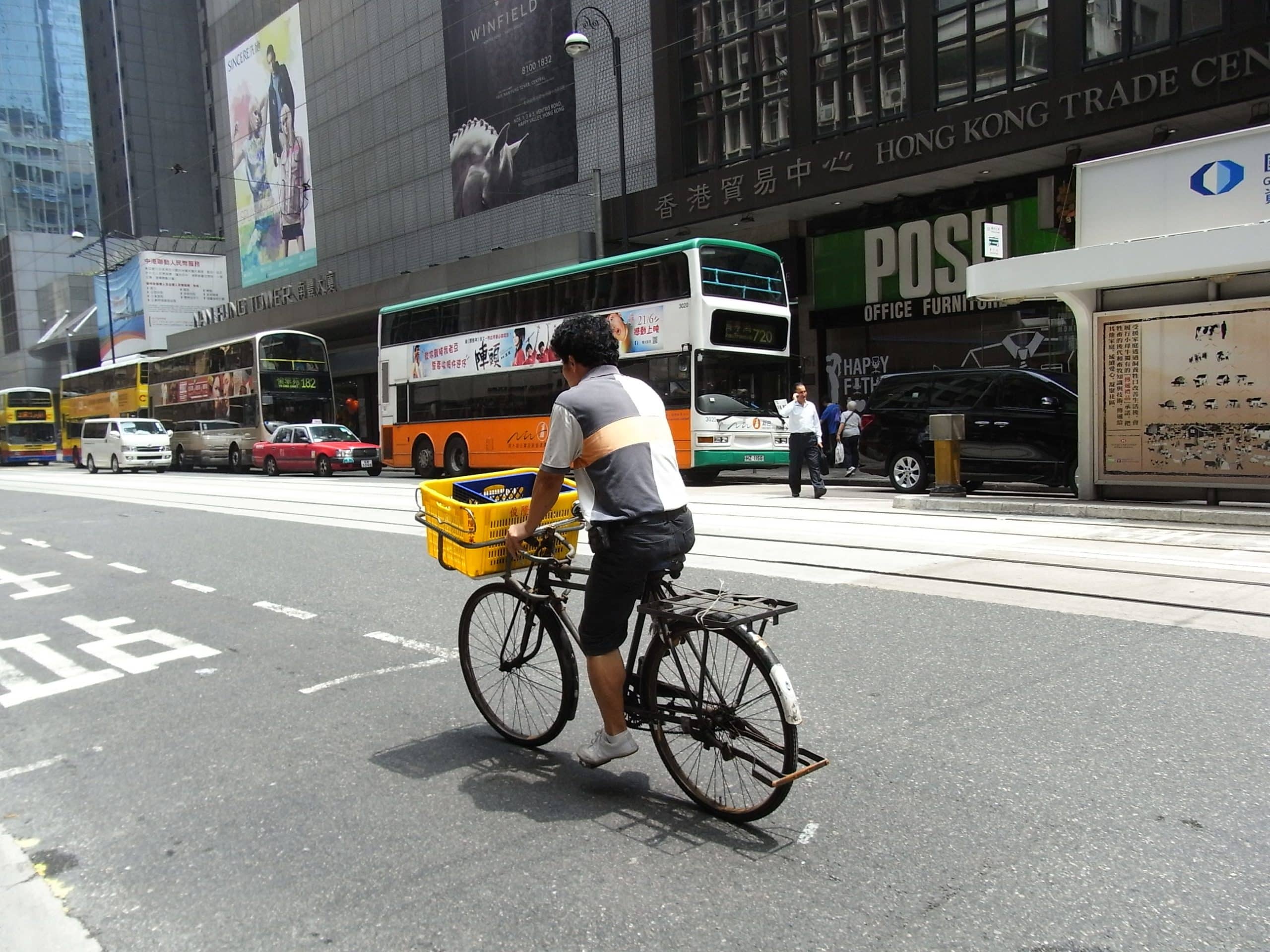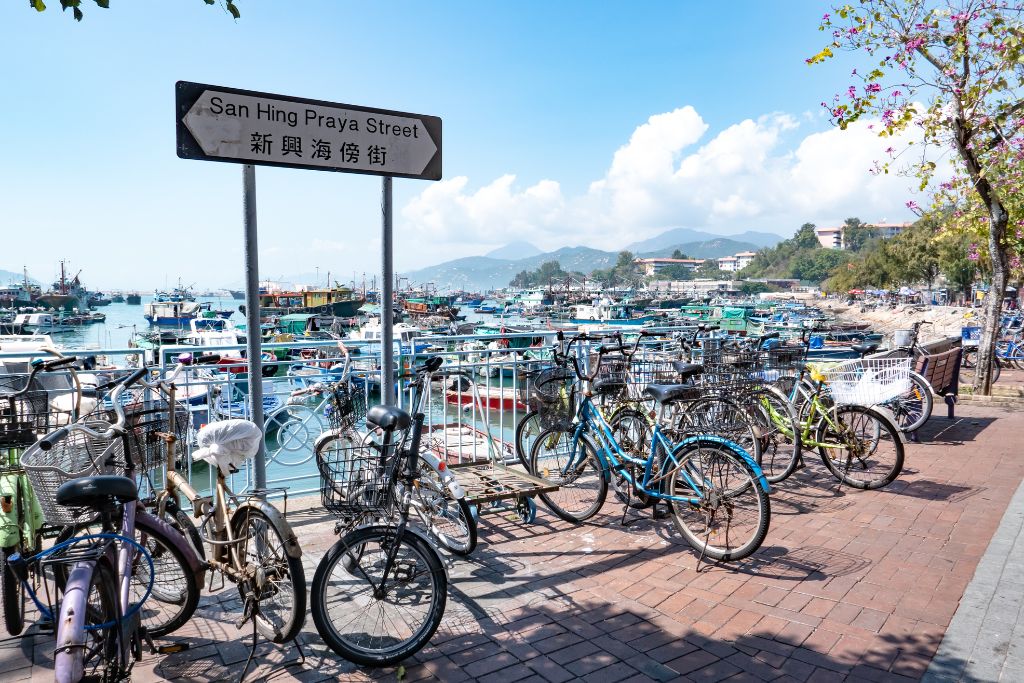According to a global survey, Hong Kong is ranked 84th out of 90 cities in terms of “bike-friendliness”. While Hongkongers have not exactly suffered from the failure to encourage cycling as a legitimate form of transport, Hong Kong will likely miss out on many long-term benefits if it continues to be so unfriendly towards bicycles. The time has come for Hong Kong to reconsider its position and give them another chance.
—
If one were to hit the streets of Hong Kong and ask the locals about their thoughts on Hong Kong becoming a more bike-friendly city, they would probably receive a lot of indifferent or negative responses, such as “It’s not going to work,” or “It’s too complicated for Hong Kong,” or “It’s not something I care enough about.”
It would be unfair to conclude from this speculation that Hongkongers are inherently bike-unfriendly people. It is more likely that they just do not believe Hong Kong currently has the capacity to become more bike-friendly.
While many Hongkongers may not be enthusiastic about the idea of bike lanes, they are certainly interested in improving the city’s existing traffic infrastructure. It is obvious that chronic problems like traffic congestion, severe roadside, and noise pollution are a major concern for many residents. Even if Hongkongers do not think bike-friendly transport infrastructure is the way forward, demand for improvement is still out there.
Urban planners in Hong Kong have tried to improve the city’s traffic infrastructure without having to dig up kilometres of roads and roadside structures. The popularisation of electric vehicles, both private and public, is one example of these efforts. Another aspect is improving walkability, with walkway and pedestrianisation projects being implemented in different parts of the city, albeit with varying degrees of success.
In addition, the Mass Transit Railway (MTR) network continues to have expansion projects lined up, making it possible for more and more residents to be included in a highly connected, city-wide system. The impressive efficiency and quality of the underground system have no doubt alleviated burdens on the overground transportation network.
But while there is momentum in policy and urban planning circles to make Hong Kong a less car-dependent city, the interest in bike lanes so far remains marginalised. Although share bikes have been introduced in certain areas of Hong Kong, they are mostly intended for leisure purposes and are not considered a serious transportation option.
If Hong Kong is committed to becoming a greener city, then the transformation must involve not simply the redesign of motor vehicles, but also that of local infrastructures along with the cultivation of cultures that encourage alternative and diversified transportation means. If Hongkongers agree with this, then why not give bike-friendly design another thought, before we decide to really nip it in the bud?
What Is Bike-Friendliness?
When urban planners, politicians, scientists, or other experts advocate for bike-friendliness, they are not – or at least should not be – simply advocating for “bikeability”. Just because a city is bikeable (cycling is permissible or possible on a road), it does not automatically mean that it is also bike-friendly (people are encouraged to cycle). They are therefore also calling for the “thriving” of cycling in cities.
Cities should be configured to proactively encourage citizens to “make friends with bikes”. This means embracing the option of cycling as a desirable or even essential part of daily life. Bike-friendly cities should also be bikeable cities, but bikeable cities do not necessarily make cycling a preferred mode of transport. But why? Let us briefly examine the benefits of bike-friendliness.
1. Health Benefits
It is argued that bike-friendly urban designs are extremely good for public health because they “simultaneously address multiple public health problems.” Just like any other sport, cycling is an activity that people would happily engage in recreationally, as it helps one build muscle, improve lung health, enhance balance and coordination, and develop navigational skills.
But there is an even more compelling case for embedding cycling more strongly into our everyday lives. Cycling is a form of active transportation, defined as “a means of getting around that is powered by human energy.” Active transportation presents a convenient way for individuals to meet their physical activity requirements within the context of their daily commute. A systematic review conducted by health professionals in Toronto found that daily cycling, even at moderate intensities (e.g. cycling to and from work once a day), can increase physical fitness levels, reduce the risk of developing chronic diseases such as diabetes and coronary heart disease, and lower the risk of cardiovascular disease and cancer.
Cycling also has important mental health benefits. In 2019, two environmental health researchers at the University of Auckland sought to investigate the reasons why cyclists were the “happiest commuters”. To this end, they identified four reasons: A high degree of commuting control (for example, a relief from the stresses of car commuting due to worries about lateness); a good balance between having sensory stimulation and overload when one interacts with the immediate environment during the commute; the “feel better” effects of exercise in general; and opportunities for social interaction with friends, fellow commuters or the neighbourhood. Other studies reinforce these assertions, as bike commuting has been found to be associated with stress reduction.
2. Ecological Benefits
Bike-friendly designs encourage more bike commutes, which in turn reduce greenhouse gas and air pollution, as most bikes (33g of CO2 emitted per mile on average) do not run on gas unlike other vehicles (280g of CO2 emitted per mile). In short, it is a very environmentally sustainable form of transport.
The carbon footprint of cycling is not zero because of the “fuel” humans have to consume when they have to cycle. But even so, emissions for cycling are still half those of walking, as very often one can just “glide” on a bike without having to constantly pedal. In one study, it was found that the CO2 emissions of cyclists were 84% lower than that of non-cyclists. It is further estimated that cycling is “ten times more important than electric cars for reaching net-zero cities.”
Hong Kong is plagued by serious traffic noise pollution, with many areas experiencing the incessant sounds of honking horns, screeching tires, and revving engines throughout the day and even late at night. Not only does the continued exposure to vehicular noise pollution heighten risks of anxiety, stress, or depression among humans but it also threatens the survival of many species, with serious implications for biodiversity. Encouraging cycling is a fantastic way to reduce noise pollution since they are much quieter than driving a car, which can help lower average traffic noise levels in a specific area.
3. Spatial and Mobility Benefits
Bikes clearly take up less space than cars. A study has shown that the space required for a moving car – including the space occupied by the car and the space needed to maintain a safe distance from other vehicles – is around 28 times that of a moving pedestrian and 14 times that of a moving bike. The fundamental spatial inefficiency of cars is one of the reasons why congestion is challenging to address.
Having more cyclists on the road can reduce the number of cars competing for space, which can improve traffic flow and reduce congestion. In a 2016 video released by PTV Mobility on YouTube, an interesting series of simulations were conducted to determine and compare the times required for 200 people to pass through a single lane using different modes of transportation, including buses, trams, pedestrians, bikes, and cars. The simulations demonstrated that buses could transport all 200 people past the point in half a minute, while bikes took two minutes. Conversely, it took over 4 minutes for a queue of cars (133 cars for 200 people) to pass through the same point, and the queue stretched over 1 kilometre in length.
Of course, the results would vary if other factors were taken into account – and PTV Mobility did run other simulations in consideration of this (including a scenario where bikes would not perform so well). Nevertheless, the simulations support the notion that cars are nowhere as effective as buses, trams and bikes when it comes to traffic flow.

While there is momentum in policy and urban planning circles to make Hong Kong a less car-dependent city, the interest in bike lanes so far remains marginalised. Image: Wikimedia Commons.
A common argument against bike-friendly road designs is that providing less road space for automobiles – such as by converting a car lane into a bike lane – can lead to decreased traffic flows. When drivers are unable to overtake cyclists, traffic slows down.
However, contrary to popular belief, the addition of well-designed bike lanes can actually improve travel times. Bike lanes are usually paired with buffer lanes that separate cyclists from the main travel lanes. Buffer lanes enable the addition of left- or right-turn pockets, allowing non-turning cars to continue straight without waiting behind vehicles turning into a road, thus maintaining traffic flow.
When considering parking, it becomes even more apparent how much more spatially efficient bikes are in comparison to cars. It is estimated that 10-20 bikes can fit into one parking space.
Hongkongers would certainly have little difficulty imagining how much easier it would be to find parking at shopping malls if there were more bike parking spaces available.
4. Economic Benefits
At a personal level, extensive cycling infrastructure can enable inexpensive travel around cities. It is estimated that the annual costs of cycling can be less than a tenth of that involved in driving a car. However, depending on the city, cycling is not always cheaper compared to public transport. Nevertheless, it is not just travelling costs that are lower for cyclists; given the health benefits mentioned earlier, cycling has been found to reduce individuals’ health costs, too.
It is commonly suggested that retail businesses may be negatively affected if more parking spaces are allocated to bikes at the expense of cars. It may be logical to assume that “public space should be dominated by car parking to attract more ‘high spenders’ to make the retail precinct successful and vibrant.”
In 2010, two researchers from the University of Melbourne, Alison Lee and Alan March, conducted a study to investigate whether such claims were true, analysing the economic impact of bikes compared to cars in a local shopping strip. It turned out that the opposite was true. Although car users did spend more on average per trip to the strip, cyclists made more bike trips. Furthermore, since more bikes could be parked in a given space than cars, the shopping strip was able to attract significantly more customers on bikes. The study found that every square metre of space allocated to bikes generated five times as much revenue as that of cars.
Lee and March concluded that “the traditional role of public space being allocated to car parking in retail environments does not necessarily support the optimal level of economic activity.”
Bicycle-friendly areas do not stifle retail. Very often, they can boost it.
Why Is Hong Kong Still So Hostile Towards Bikes?
Advocates of bike-friendliness are not urging for the complete elimination of cars. There are certain functions of cars that cannot be replaced by a bike, such as the carrying out of industrial activities or the transportation of elderly, children, and persons with disabilities. It is also impossible to make cycling more common in the case of more long-distance commutes. Rather, advocates are saying that relying solely on automobiles is not the only option for city travel, particularly for short distances. If individuals can cycle or use other alternative modes of transportation, why not do so?
The benefits of bike-friendliness for cities are evident. But it is also evident that Hong Kong is struggling as a city to incorporate such ideas and lessons into the city’s existing transport infrastructure. According to a 2022 global survey, Hong Kong’s “bicycle friendliness” was ranked 84th on a list of 90 cities, as the number of bicycle accidents has only increased over the years.
Exactly Like Friendship: Cycling Is an Experience
Let us return to the hypothetical situation at the start.
If the surveyed Hongkongers were given the opportunity to elaborate on their pessimism, we would probably find that they were pessimistic not because they found the underlying evidence in favour of bike-friendliness to be untrue or deceptive but rather because they would have serious reservations about whether those findings could be translated to the tricky context of Hong Kong.
So why is Hong Kong still so hostile toward bikes? It might be that most Hongkongers have never experienced the aforementioned benefits of bike-friendliness firsthand in the city. Just like friendship, it is impossible to just tell someone that “making friends is good” and expecting them to believe it without the actual experience of making one. That is why it is hard to imagine how bike-friendliness can make a powerful additional impact on the city simply by preaching.
Furthermore, given how already well-developed Hong Kong’s transport infrastructure is –and how hurried Hongkongers are in general, who has got the time to take things slow with bikes? Who would want to miss out on an extra 20 minutes of sleep in the morning?
Hong Kong may not be missing out on too much now if it continues to be unwilling to make friends with bikes in the short term. But in the long run, Hong Kong might find itself pedalling backward, if it continues to push bikes away.
On the topic of cycling cities, Anna-Karina Reibold wrote for the European Cyclists’ Federation: “First create a vision, then support it.”
We don’t make friends with the expectation that the friendship will blossom. We make friends because we like them. As we get to know each other better, we will figure out ways to make that friendship work. The same goes for bikes.
This article is Part 1 of a two-part series on Hong Kong’s bike-friendliness. Check out Part 2: Can Hongkongers Rediscover Their Love for Bicycles?


















